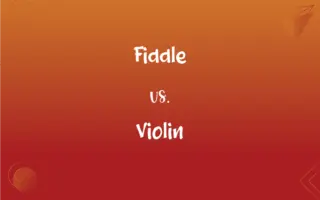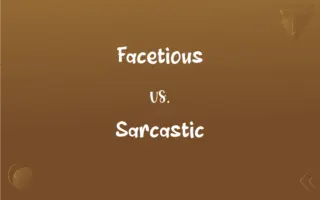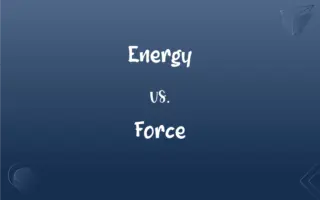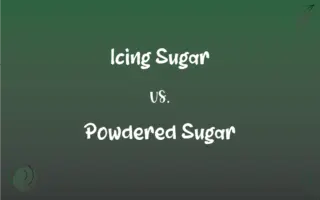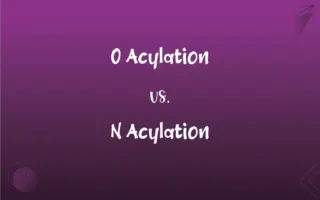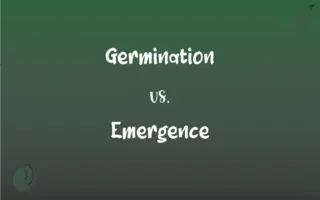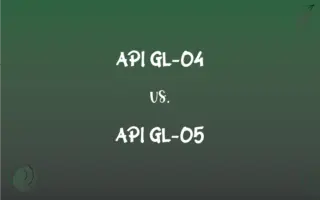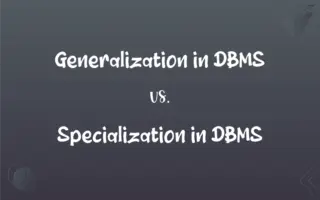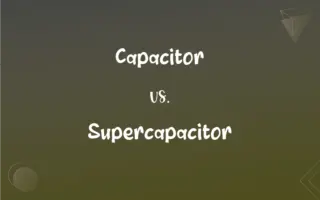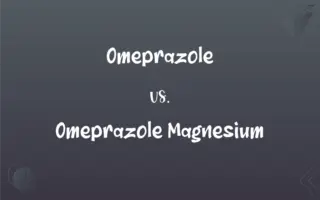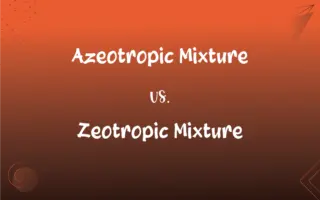Transcription vs. Translation: What's the Difference?
Edited by Aimie Carlson || By Harlon Moss || Updated on October 26, 2023
Transcription is the process of copying DNA to RNA, while translation is the process of converting RNA to protein.
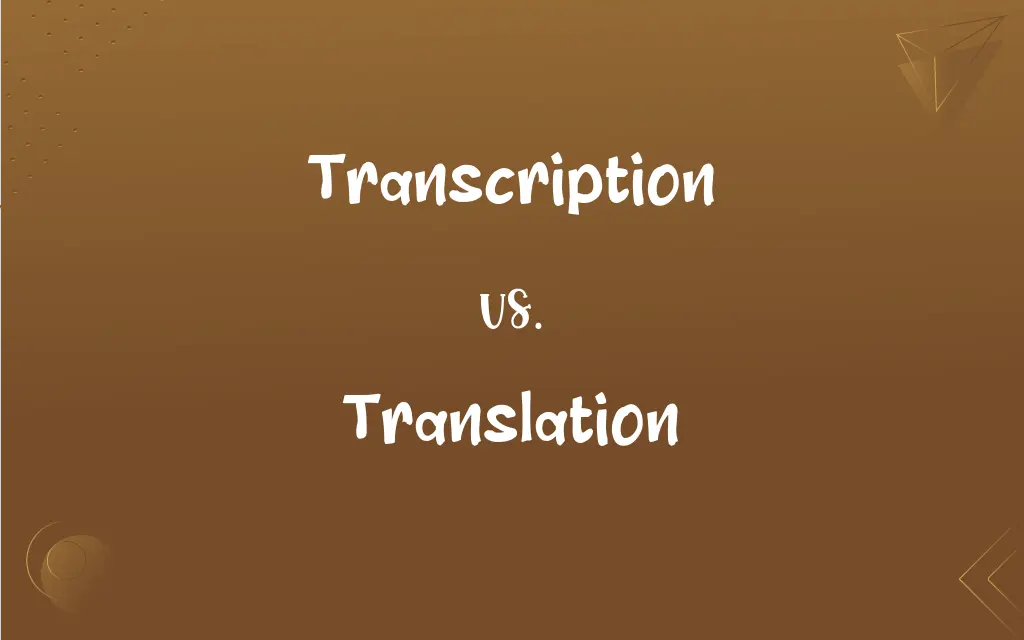
Key Differences
Transcription and translation are two vital processes that take place within cells, allowing genetic information to be expressed. Transcription, at its core, is the act of transcribing or copying genetic information from DNA into RNA. This process occurs in the cell nucleus. On the other hand, translation refers to the synthesis of proteins using the information coded in RNA. This takes place in the cytoplasm, specifically on ribosomes.
Transcription can be visualized as the first step in the expression of genetic information. During transcription, an enzyme called RNA polymerase reads the DNA sequence and synthesizes a complementary RNA strand. Translation, in contrast, involves the reading of this RNA sequence by ribosomes to build a corresponding protein. This process uses transfer RNA (tRNA) molecules to bring amino acids in the correct order.
Both transcription and translation are tightly regulated processes, ensuring that genes are expressed at the right time and in the correct amounts. Transcription, for instance, can be turned on or off by specific proteins called transcription factors. Translation, on the other hand, can be regulated by factors that influence the initiation, elongation, and termination phases, ensuring efficient protein synthesis.
To further illustrate the interconnected nature of these processes: without transcription, there would be no RNA template for translation. Without translation, the information in the RNA would not be transformed into functional proteins. Despite their different functions and locations within the cell, both transcription and translation are integral to gene expression and the life of a cell.
Comparison Chart
Process
Copying DNA into RNA
Converting RNA into protein
ADVERTISEMENT
Location in Cell
Nucleus
Cytoplasm on ribosomes
Main Molecules
DNA, RNA polymerase, RNA
MRNA, tRNA, ribosomes
Regulation
Transcription factors
Initiation, elongation, termination factors
End Product
RNA molecule
Protein molecule
Transcription and Translation Definitions
Transcription
In genetics, transcription is the process of copying DNA into RNA.
The first step in gene expression involves transcription of the DNA sequence.
ADVERTISEMENT
Translation
In cellular biology, translation refers to the process of synthesizing proteins from RNA.
The ribosome plays a pivotal role in the translation process.
Transcription
Transcription refers to the process of converting spoken words into written text.
The transcription of the interview was completed within hours.
Translation
Translation can refer to movement without rotation.
The engineer studied the translation motion of the mechanism.
Transcription
Transcription is the representation of sounds of speech in written form.
Phonetics relies on precise transcription to study language sounds.
Translation
Translation is the act of converting text from one language to another.
The translation of the novel introduced it to a wider audience.
Transcription
Transcription can refer to the arrangement of a musical piece for a different instrument.
She performed a transcription of a cello piece on her violin.
Translation
Translation can mean interpreting the meaning of something.
Her translation of the ancient text revealed its hidden teachings.
Transcription
Transcription is the act of making an exact written copy.
The student was skilled in transcription, taking notes verbatim from the lecture.
Translation
In mathematics, translation denotes the shift of a figure or shape without changing its orientation.
The geometry problem involved a translation of the triangle along the x-axis.
Transcription
The act or process of transcribing.
Translation
The act or process of translating, especially from one language into another.
FAQs
What is transcription in the context of genetics?
Transcription is the process of copying DNA into RNA.
Where does transcription take place in a cell?
Transcription occurs in the cell nucleus.
What role does RNA polymerase play in transcription?
RNA polymerase is an enzyme that reads the DNA sequence and synthesizes a complementary RNA strand during transcription.
In which cellular compartment does translation begin?
Translation begins in the cytoplasm.
Can transcription refer to written content?
Yes, transcription can mean converting spoken words into written text.
How is translation different from transcription in biology?
Translation converts RNA into protein, while transcription copies DNA into RNA.
Are transcription factors involved in translation?
No, transcription factors regulate transcription, not translation.
Is transcription an upstream or downstream process to translation in gene expression?
Transcription is an upstream process to translation in gene expression.
Which process, transcription or translation, involves amino acids?
Translation involves amino acids.
Which of the two processes, transcription or translation, involves ribosomes?
Translation involves ribosomes.
Where does translation occur?
Translation takes place in the cytoplasm, specifically on ribosomes.
Are both transcription and translation vital for gene expression?
Yes, both transcription and translation are crucial for gene expression.
What is the end product of transcription?
The end product of transcription is an RNA molecule.
How is the transcription of music different from its genetic counterpart?
In music, transcription refers to arranging a piece for a different instrument, whereas in genetics, it's copying DNA to RNA.
Which cell organelle is primarily involved in translation?
The ribosome is primarily involved in translation.
Can translation refer to changing a text's language?
Yes, translation often means converting text from one language to another.
What is the end product of translation in cellular biology?
The end product of translation is a protein molecule.
Can translation mean a movement in physics?
Yes, translation can refer to movement without rotation.
How do tRNA molecules contribute to translation?
tRNA molecules bring amino acids to ribosomes in the correct order during translation.
Can both transcription and translation refer to linguistic processes?
Yes, transcription can mean converting speech to text, and translation can mean converting text from one language to another.
About Author
Written by
Harlon MossHarlon is a seasoned quality moderator and accomplished content writer for Difference Wiki. An alumnus of the prestigious University of California, he earned his degree in Computer Science. Leveraging his academic background, Harlon brings a meticulous and informed perspective to his work, ensuring content accuracy and excellence.
Edited by
Aimie CarlsonAimie Carlson, holding a master's degree in English literature, is a fervent English language enthusiast. She lends her writing talents to Difference Wiki, a prominent website that specializes in comparisons, offering readers insightful analyses that both captivate and inform.
